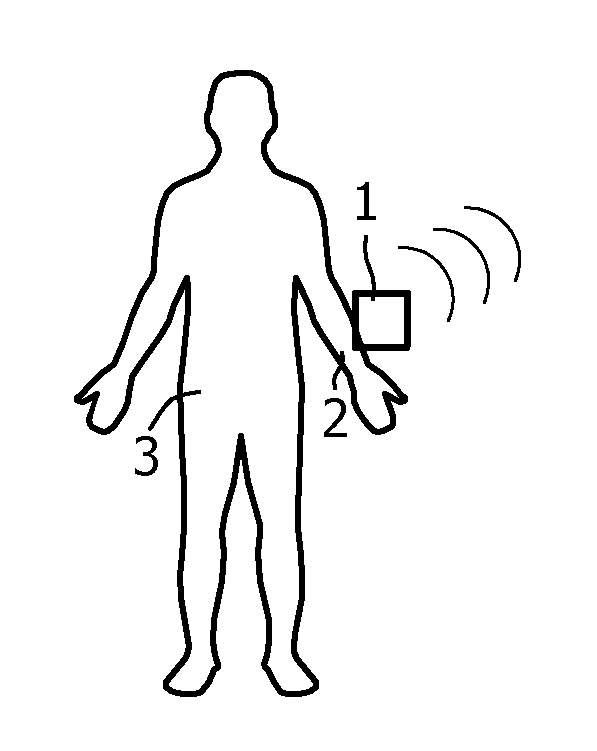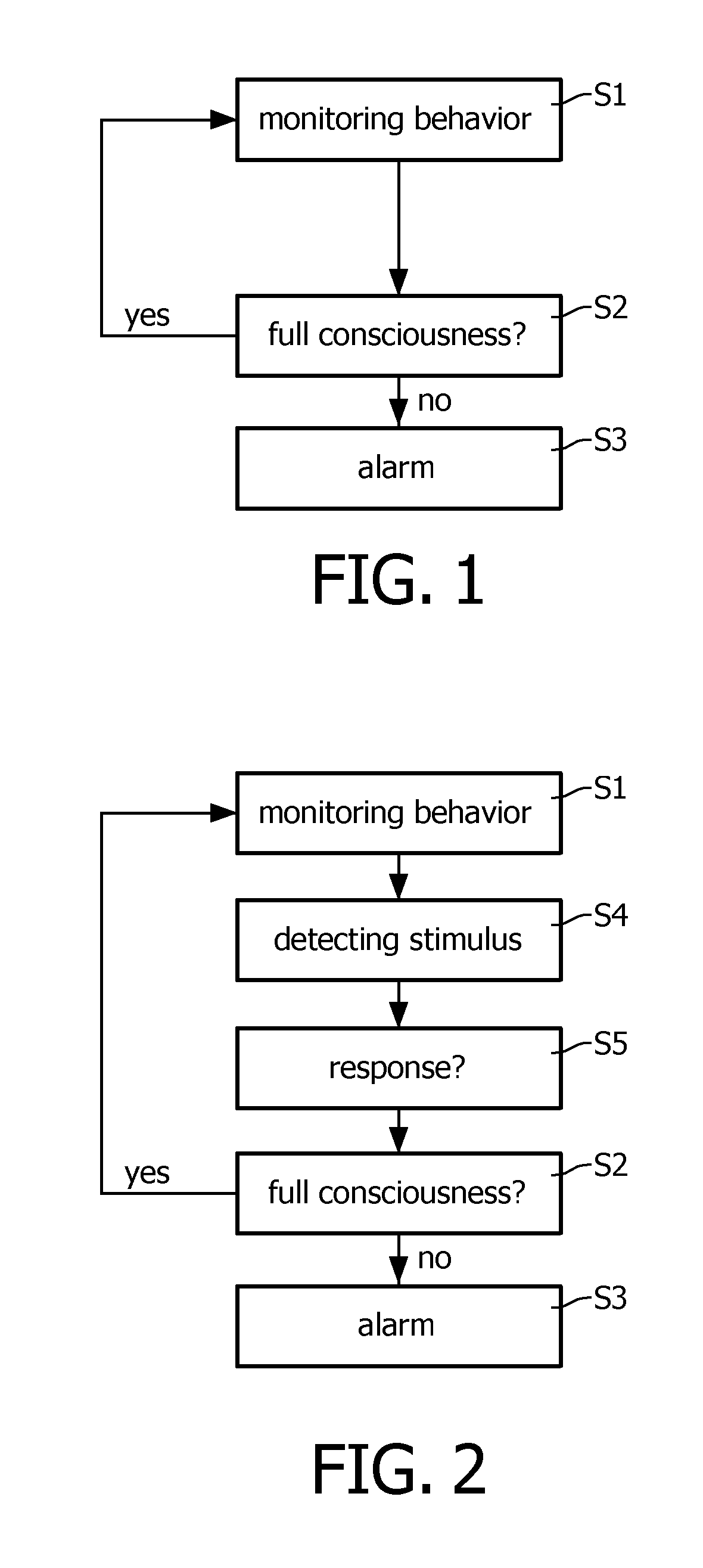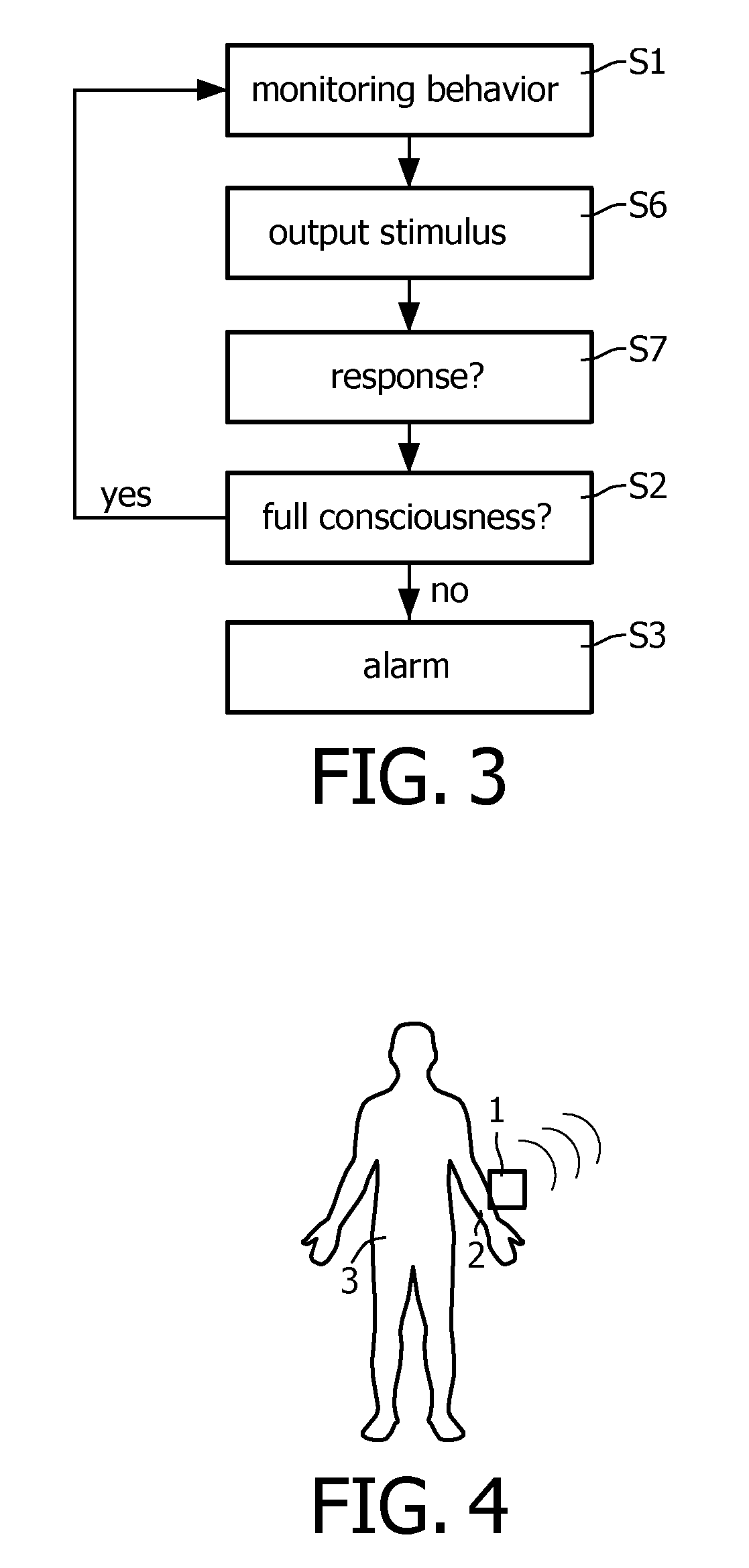Consciousness monitoring
a monitoring and consciousness technology, applied in the field of automatic monitoring of consciousness, can solve the problems of not providing an analysis according to a full consciousness scale, and achieve the effects of preventing unnecessary alarms, preventing annoyance and non-compliance of persons, and being convenient to implemen
- Summary
- Abstract
- Description
- Claims
- Application Information
AI Technical Summary
Benefits of technology
Problems solved by technology
Method used
Image
Examples
first embodiment
[0033]the present invention will now be described with reference to FIGS. 1, 4, and 5.
[0034]The monitoring and alarming device 1 according to the first embodiment is formed by a portable device to be attached to the wrist 2 of a person 3 which can e.g. be a patient in a hospital. The monitoring and alarming device 1 according to the first embodiment comprises only one sensor 4 which is formed by a movement sensor adapted for sensing movement of the body part to which the monitoring and alarming device 1 is attached. The movement sensor can e.g. be formed by a 3-D accelerometer. The sensor 4 is connected (via a connection not shown in the Figures) to a processing unit 5 which is also provided in the monitoring and alarming device 1. The processing unit 5 is adapted to process the signals received from the sensor 4 and deduct information about the performed movements from the signals. Further, specific algorithms are implemented on the processing unit 5 which are adapted to analyze th...
second embodiment
[0048] not only at least one aspect of the behavior of the patient is monitored but also at least one naturally occurring environmental stimulus is detected and the response in the monitored aspect of the behavior to the at least one environmental stimulus is monitored and analyzed. In this context, a naturally occurring environmental stimulus means a stimulus which is not intentionally and artificially generated in order to trigger a response by the patient but is a stimulus which typically occurs in the environment of the patient, such as normal acoustic signals. Although the embodiment will be explained with respect to acoustic signals, there is no restriction to acoustic signals and e.g. light signals / changes, opening of doors, etc. could also be used as environmental stimuli additionally or alternatively.
[0049]The monitoring and alarming device 1 according to the second embodiment is further provided with a detection unit 7 for detecting at least one environmental stimulus (sho...
third embodiment
[0057] the at least one stimulation device 8 is controlled by the processing unit 5 to provide a small “buzz” to the patient as an intentional artificial stimulus. After the artificial intentional stimulus, the response in the monitored at least one aspect of the behavior of the patient is measured. When the patient is conscious, the stimulus will lead to a reaction of the patient which can be identified as a response in the monitored at least one aspect of behavior. For the particular example in which the monitoring and alarming device 1 is formed by a bracelet to be attached to patient and comprising the buzzer as stimulation device 8 and an accelerometer as sensor 4, the response of the patient will typically be a small movement of the arm which can be sensed by the sensor 4. This particular realization has the advantage that such a response can even be expected at night when the patient is asleep.
[0058]According to the third embodiment, the at least one artificial intentional st...
PUM
 Login to View More
Login to View More Abstract
Description
Claims
Application Information
 Login to View More
Login to View More - R&D
- Intellectual Property
- Life Sciences
- Materials
- Tech Scout
- Unparalleled Data Quality
- Higher Quality Content
- 60% Fewer Hallucinations
Browse by: Latest US Patents, China's latest patents, Technical Efficacy Thesaurus, Application Domain, Technology Topic, Popular Technical Reports.
© 2025 PatSnap. All rights reserved.Legal|Privacy policy|Modern Slavery Act Transparency Statement|Sitemap|About US| Contact US: help@patsnap.com



